Righting wrongs is a tough proposition in the world of fisheries conservation. Too often, the challenges outweigh expectations. Just as frequently, reality sets in, and desperation takes over. Take the Lower Snake River basin in Idaho. These are rivers that flow from the last, best (and largely intact) spawning habitat for salmon and steelhead that somehow manage to climb eight dams from the mouth of the Columbia through eastern Washington and into the Gem State. The Snake, Salmon and Clearwater rivers used to be the stuff of legends – salmon and trout factories that attracted anglers the world over.
Today, they are products of “shifting baseline syndrome,” where anglers get excited about runs of steelhead that eclipse 30,000 fish. Even the “old timers” have come to terms with the fact that, before four dams on the lower Snake were constructed during the middle part of the last century, the runs were sometimes 10 times that number, and occasionally even greater.
The salmon and steelhead that make their way up the Snake, Salmon and the Clearwater are the troopers of the anadromous fish world – real warriors that have been through the trenches. The lucky few that manage to make it to hatcheries or, better yet, construct redds in the rivers’ upper stretches, have conquered the worst that mankind could throw at them.
And then, months later, when the smolts emerge from the gravel or are allowed to “escape” their hatchery confines and begin their journey to the ocean, they, too, have to figure out a way to get where they’re going. Yes, the dams are problematic. These juvenile fish often get lost in the froggy backwaters the dams create. Often, they’re preyed upon by everything from stocked trout to introduced populations of smallmouth bass.
And, now, according to fisheries biologists at the Idaho Department of Fish and Game, another toothy predator is taking a literal bite out of both wild and hatchery salmon and steelhead as they navigate the increasingly troubled waters en route to the Pacific: the walleye.
An eating machine
Walleye are native to the upper Midwest and most of boreal Canada. Their normal prey base is smaller fish – minnows and shiners native to the lakes of their home range. But, in 2023, more walleye were reported in catches by anglers plying the waters of the Snake River in Hells Canyon and in the Salmon River upstream of its confluence with the Snake than in all previous years combined.
As in most states where the fish is not native, walleye were intentionally released in Idaho to provide a recreational fishery – the fish is popular among anglers, both for its game fight and its table fare. Walleye, by most accounts, are absolutely delicious.
But the walleye found in the Snake and Salmon rivers are likely the products of illegal fish introductions that started well downstream in the Columbia some 80 years ago – over the last several decades, walleye have apparently moved upriver into the lower Snake and Salmon rivers. The first walleye was confirmed via photos in 2019, with anglers sending in another confirmed walleye photo in 2020. Three photos of walleye were submitted in 2022.
Given the lack of forage fish in these rivers, the invasive predator must turn to other sources of food. And, at any given time during the year when juvenile salmon and steelhead are making their way to the ocean, they are absolutely on the walleye’s menu.
Catch and kill
Just this month, Idaho Fish and Game asked walleye anglers to be less discerning and to kill and harvest every walleye they catch in the state’s salmon and steelhead rivers. But, in the massive Columbia River watershed, where the non-native fish are largely naturalized, is this effort to right a past wrong likely to prove successful?
“Anglers have been great about keeping us informed about walleye they’re encountering, and we greatly appreciate that,” says Marika Dobos, a Lewiston-based fisheries biologist with IDFG. “We know it can be an inconvenience to their fishing trips, but catching, keeping and reporting walleye is the best tool biologists have to monitor where these fish are migrating, estimating how many might be out there, and also removing some of them.”
And, frankly, that’s about the best we can expect. From here on out, we can almost always expect to find walleye in the Columbia drainage, including in the Snake and Salmon rivers. And if the invasive fish isn’t already in the Clearwater drainage, it’s a good bet that it will be in time.
In 2023, 16 anglers reported catching 18 walleye. This news amounts to yet another blow to the already severely diminished Snake River basin anadromous fishery. First, there are the dams. Throw in other introduced fish in the Columbia’s lower reaches, like smallmouth bass, largemouth bass and common carp. Now, well upstream of where they were ever expected, anglers are catching walleye, perhaps the most predatory invasive in the system.
Evolution be damned (or dammed?)
The salmon and steelhead of the Snake River basin evolved with precious few piscine predators. The basin’s rivers, before they were dammed and rechanneled, hosted healthy populations of hungry bull trout and it’s likely northern pikeminnows certainly grabbed their share of young salmonids migrating to the sea. But, otherwise, chinook and sockeye salmon, as well as Idaho’s famed runs of massive “B-run” steelhead made their way to the Pacific largely unmolested.
In today’s altered environment, where dams have changed the river’s structure and introduced species have changed its basic ecology, it’s a wonder any salmon or steelhead make it back to Idaho at all.
Add in the increasing effects of climate change, and the lower Snake and the Columbia, with their backwaters and slow currents, are becoming more hospitable to fish like walleye than they are to native salmonids. According to IDFG, a 16-inch female walleye can produce 57,000 eggs during the fish’s spawning season. Bigger fish, up to eight pounds, can produce 300,000 eggs.
What to do?
Truthfully, beyond what IDFG is recommending and hoping against hope that recreational anglers will follow through and kill every walleye they catch, there is very little to be done.
That is, there’s very little to be done short of removing the four uppermost dams on the lower Snake River, a solution long recommended by science, but, save for a brave few, a non-starter in the western political landscape
Certainly, dam removal would go a long way toward freeing the Snake and returning the river to a much more natural condition. This alone would make the river less habitable to invasives like walleye and maybe even bass. I would also slice in half the number of man-made obstacles salmon and steelhead would have to navigate en route the Pacific and back.
Until the political will can be found, we’re likely left where we are right now, with ever-dwindling returns of salmon and steelhead and a future for the migratory fish that, even through the most optimistic lens, looks mighty bleak.




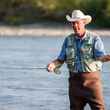


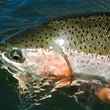
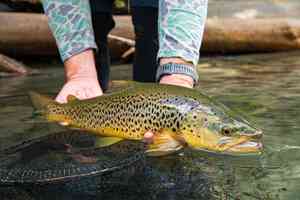


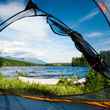




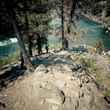







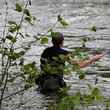

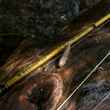
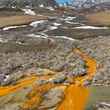
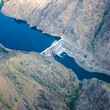
Comments
Walleye lover replied on Permalink
I volunteer to come an target and remove every walleye I can....from the river to the frying pan so to speak
No1Hunter replied on Permalink
"That is, there’s very little to be done short of removing the four uppermost dams on the lower Snake River, a solution long recommended by science"
Actually, REAL science has proved this false via pit tag studies comparing the Snake to the Fraser. But, Hatch continues to spew the junk science opinions. Yes, the Snake River dams have somewhat of an effect on the fish. So does the power production necessary to read your articles, to make your fishing equipment, to get you to your favorite fishing hole, etc. Until you go back to living in a cave and fish with a willow stick, you need to lay off dam removal.
Jon B. Tobey replied on Permalink
Has any one ever studied the impact that non-native browns have had in Western rivers?
I never see that talked about.
Pages